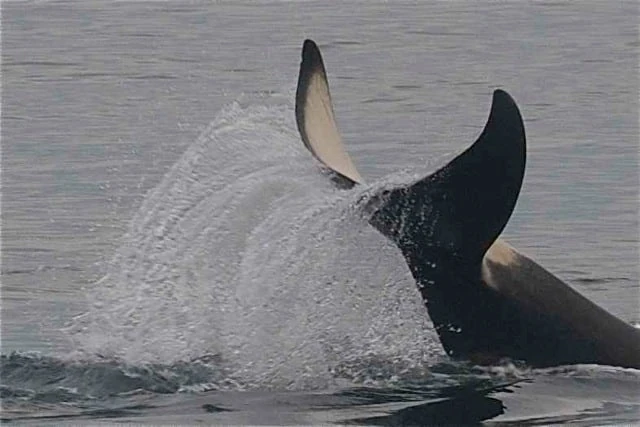Join a Kayak Quest for Whales Today!
The waters of Washington’s San Juan Islands support a great diversity of wildlife and baleen whales are the largest of all marine species we see on our San Juan Islands kayaking tours. Baleen whales completely lack teeth and filter small prey such as plankton, worms, and baitfish from the water using rows of baleen arranged in their mouths like sieves. It is thought that their most distant ancestors were ungulates much like modern day hippopotamuses. In contrast, toothed whales such as orcas have strong, sharp teeth and appear to have evolved from weasel-like predators. Baleen whales and toothed whales may appear to be superficially similar but are completely unrelated.
Humpback whales and gray whales are spring and fall migrants in the San Juan Islands with occasional individuals remaining for all or part of the summer in nearby areas of the Salish Sea. Minke whales are primarily spring through fall residents that are largely absent in the winter.

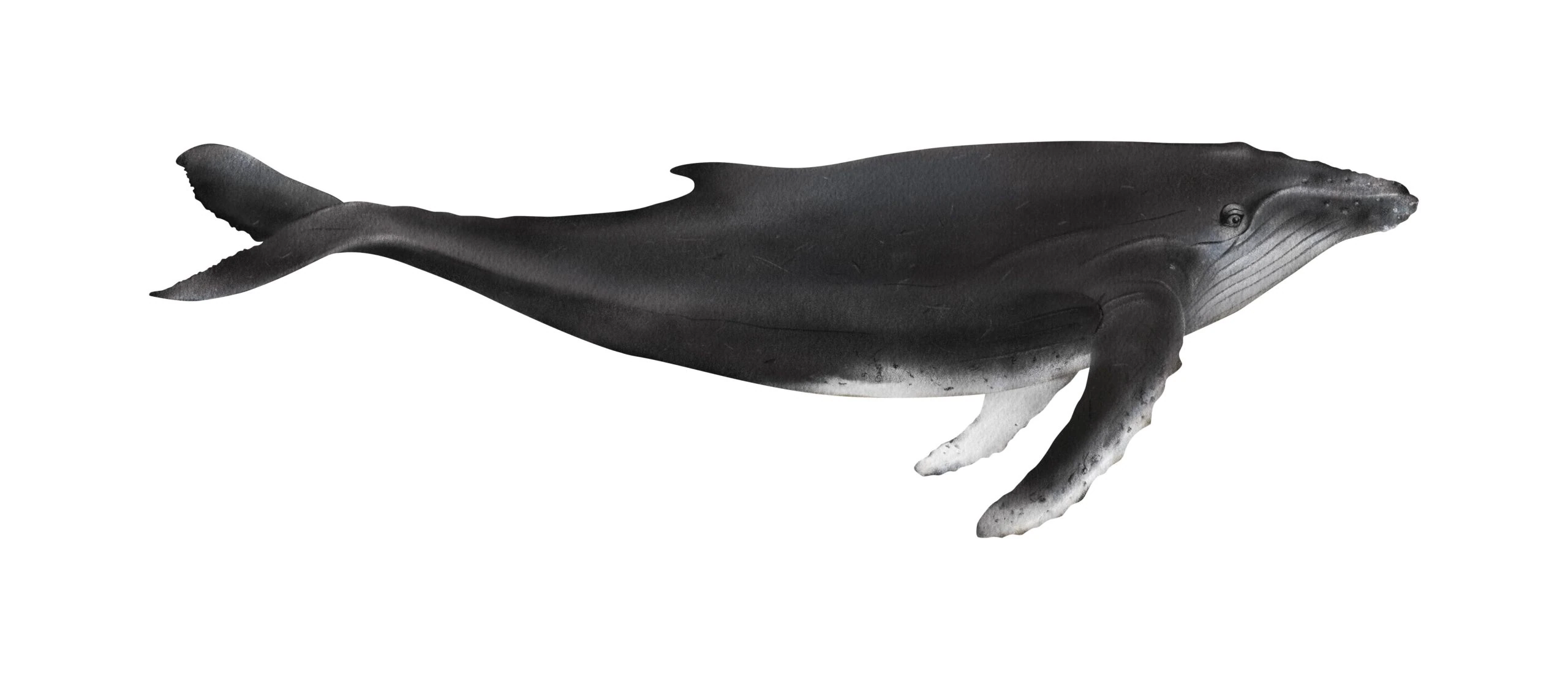
Humpback whales (Megaptera novaeangliae) are one of the world’s largest baleen whales. They grow to 50 feet in length and up to 45 tons. The scientific name translates as “Big-Winged New Englander.” Humpbacks are famous for their complex and haunting song, sung by the males in their tropical breeding areas of Hawai’I and Mexico. Humpback whales migrate between 16-20,000 miles annually between their northern feeding areas and calving habitat. Like nearly all baleen whales, they forage only spring through fall, and then fast while in tropical waters while living off of a thick layer of blubber fat. Humpback whales focus mainly on eating krill and small baitfish such as herring. Their most famous foraging method involves blowing a bubble net around herring schools to trap the fish. Humpback whales are by far the most acrobatic and socially complex of all the baleen whales. They were reduced by whalers to less than 5% of their original population but thanks to conservation efforts they have recovered faster than any other baleen whale species and now number about 20,000 individuals in the North Pacific. They were totally extirpated from the San Juan Islands by a small whaling station near Victoria, B.C. in the 1930s. When a humpback was spotted, they blew a steam whistle to summon an ad hoc crew of farmers, loggers and fisherman who chased down the unsuspecting whales in rowing dinghies. They have returned to the San Juan Islands and now number around 10-15 individuals, including some cow/calf pairs. Most humpback whales summer in southeast Alaska and this makes our Alaska kayak tours the best place to see them.
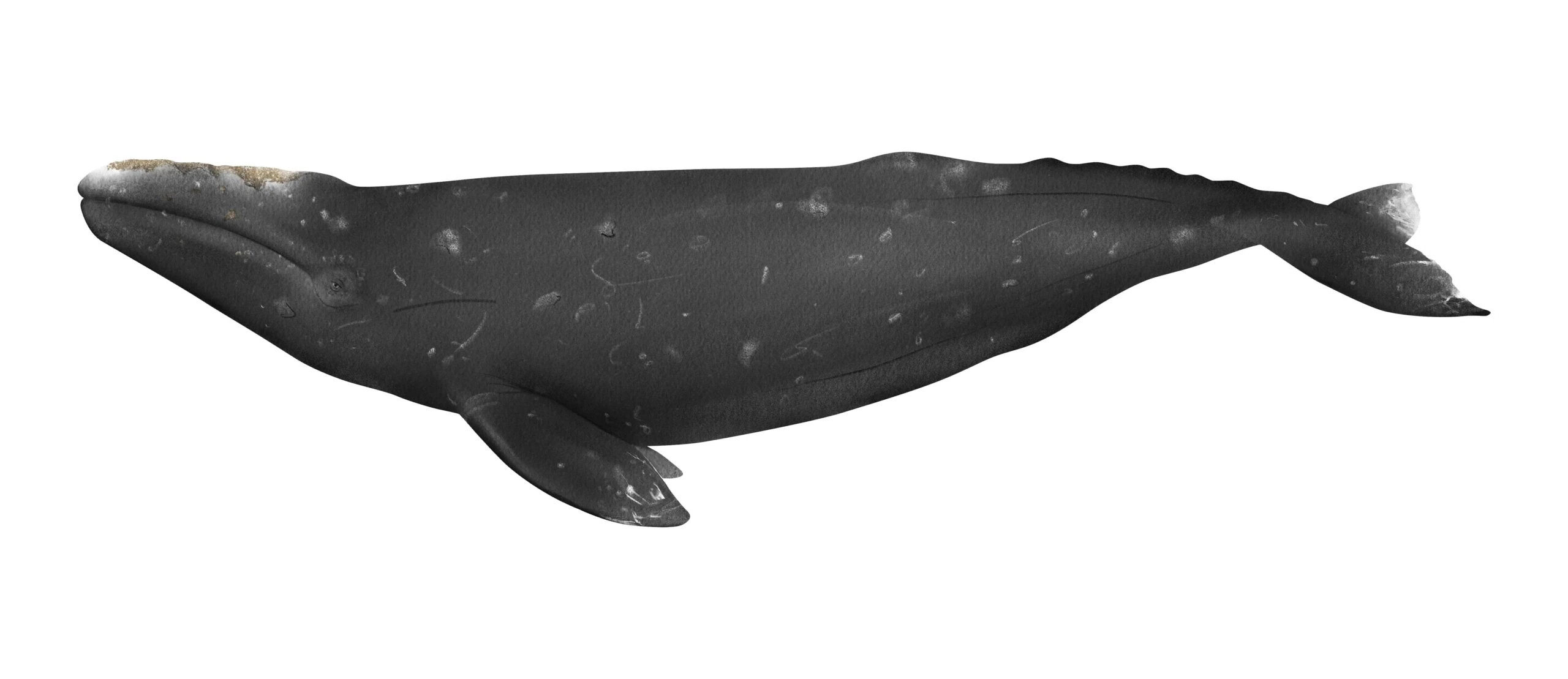
Gray whales (Eschrichtius robustus) are named from their scarred and blotchy gray skin. They can mature at 45 feet and 30 tons. Like all baleen whales, gray whales have two nostrils (blowholes) on top of their heads in contrast to the single blowhole of a toothed whale. Gray whales migrate further than any other mammal in the world and can travel 10-12,000 miles each year. During spring migration several dozen gray whales enter the Salish Sea where they occasionally stop to feed in the San Juan Islands. They forage in nearshore areas by plowing through muddy bottoms in search of benthic prey such as worms, mudshrimp, and amphipods. They summer mainly in the Bering Sea with smaller numbers strewn southwards along the coast down to Oregon. In winter they concentrate in just a few calving lagoons along the Baja Peninsula where you can see and pet them on our Baja kayaking tours. Eastern Pacific gray whales have returned from the brink of extinction at the hand of whalers but now number around 20,000 individuals. Western Pacific gray whales barely survive with perhaps less than 100 left alive. Atlantic gray whales were completely wiped out long ago.
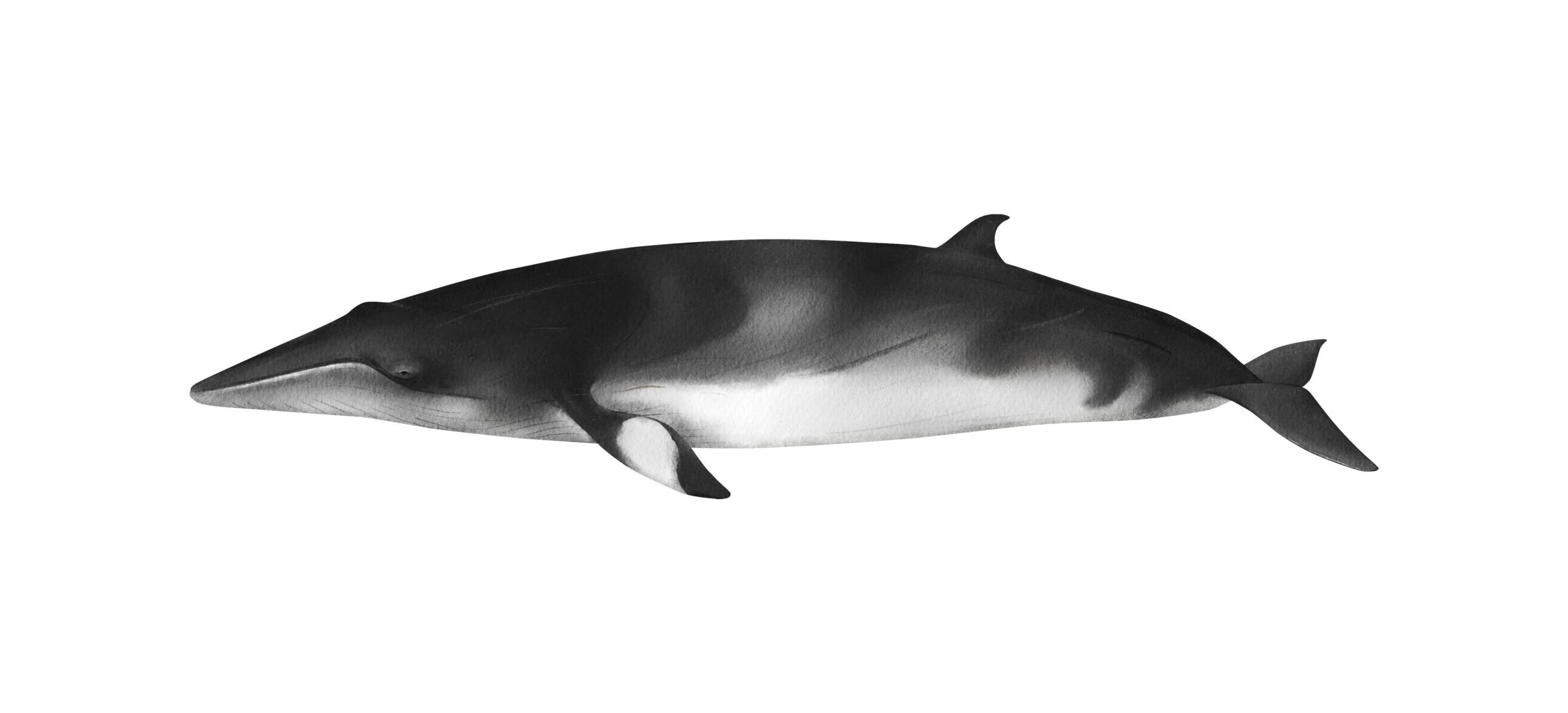
Minke whales (Balaenoptera acutorostrata) or more specifically, the common or northern minke whale, are the second smallest baleen whale. They were likely named after a Norwegian whaling captain that infamously bragged about how large the whales were that he killed. Other whalers then sarcastically called small whales “minke’s” and the name seem to have stuck. They reach a length of 28 feet and 5 tons in the North Pacific population. The coastal population of minke whales from California through Washington is estimated at only 600-1000 individuals. This is in stark contrast to their abundance along the Atlantic coast. They have been heavily hunted by whalers and Japan whalers still kill them under the guise of “scientific research”. Before the herring population of the Salish Sea crashed due to human interference, there were around 30 minke whales that foraged all summer in the San Juan Islands. Now, only about half this number survive and now feed mainly on sandlance. They can be entertaining to watch as they lunge open-mouthed at schools of baitfish while sending flocks of seabirds into the air to escape accidental consumption.
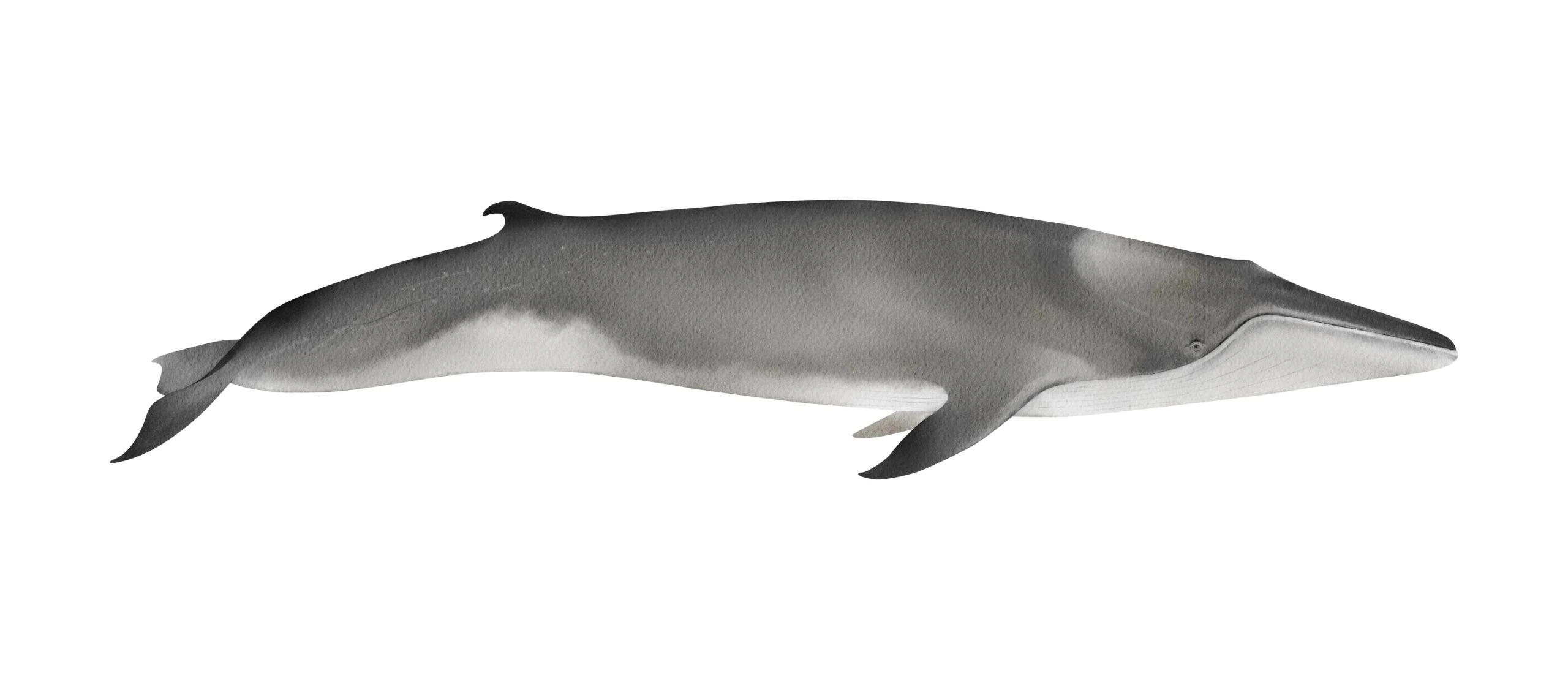
Fin whales (Balaenoptera physalus)The second largest living mammal, “finbacks” have been severely impacted by commercial whaling. Nevertheless, they are one of the most common whales seen on our Sea of Cortez kayaking tours where they thrill us with their size and sleek speed. They are very slowly recovering in coastal Washington but are still very uncommon and rarely enter the San Juan Islands. Despite averaging around 60 feet long, they can be easily confused with the much smaller minke whale due to the difficulty of judging size in the open sea. Among mammals they are unique in having asymmetric coloration: one jaw is white and the other is black. This adaptation makes it easier for them to approach or concentrate prey depending on what they are hunting and the time of day.
We encounter all 4 species of these baleen whales on our kayak tours in the San Juan Islands randomly throughout the paddling season. However, our kayaking routes are optimized for finding orca whales, so sightings of baleen whales are very unpredictable. It is best to keep your expectations low for encountering a baleen whale while kayaking in the San Juan Islands. In contrast, our Alaska kayaking tours excel at finding humpback whales. And we offer Baja kayak tours that provide excellent opportunities for not only seeing gray whales, but actually touching and petting them, too!
